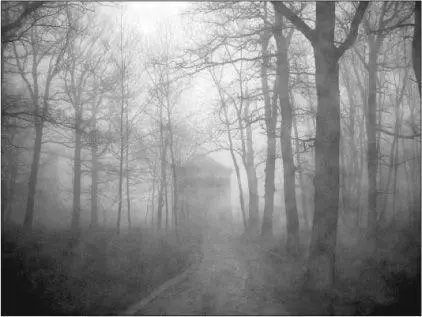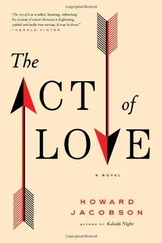Who knew what manner of ghosts lurked out there in the gray swirl? So many had died here. At any moment I expected them to assemble in their striped pajamas for yet another roll call. I could join right in, singing “The Jew Song.”
I’d lived a charmed life, I knew, growing up in America, removed from the terror of my roots. In Romania, where half my family comes from, they didn’t even need Nazis. The Romanian army competed with the Einsatzgruppen, SS “mobile killing teams,” to see how many Jews they could murder. It was in the blood there, too. But I’d been spared, much as I’d gotten out of so much other misery, the Vietnam War included. Past sixty now, and they hadn’t laid a glove on me. Yet here I was, at long last, the gate that declared Jedem Das Seine shut behind me.
And what had brought me here? The stupid lampshade. A few weeks before I got on the plane to Berlin, Skip Henderson called me in his special kind of panic to tell me about a dream he’d had. It was the lampshade, hovering, against a black background. That was it, his entire dream. The shade never moved, just stayed there, blocking his view of anything else in life. This was when he realized something about the tassels, the little Hershey Kiss bobs everyone I’d talked to was certain had been added years, perhaps decades, after the construction of the shade itself. The guy from Sotheby’s had told me: “Beaux arts, central European, midcentury, fringe added later.” Hugo Ramirez, who owns a classy antique lighting shop on Fifty-ninth Street in Manhattan, had agreed: “Definitely central European, maybe thirties or forties; someone put those tassels on later.”
“Take the thing out of the box,” Skip demanded. “Look at the tassels.”
“What about them?”
“They’re Mardi Gras colors, aren’t they?”
It is remarkable what you don’t notice. Skip was right. The tassels were faded, not garish and plastic-bright like the beads the masked men throw at you from passing floats. But they were definitely green, gold, and purple. Green, gold, and purple, in that order, all the way around. So what did that mean? That the unknown individual, the surreptitious stitcher, the one who put the tassels on, had a really sick sense of humor? Who knew? If anything did seem certain, however, it was that Dave Dominici was right when he said the lampshade came “from the storm,” that without Katrina it would have never come to light. It took the churn of Katrina’s double, double, toil and trouble to dredge the Nazi lampshade up from the underground.
As I stared off into the Buchenwald fog, I felt a connection between this place of terror, where the lampshade supposedly had come from, and where it ended up, in the New Orleans flood. The lampshade had its secrets, things I needed to know. Perhaps Goethe, poet of the Walpurgisnacht, would have had an answer. But even that was far from clear, as I knew from my copy of Faust, inside my shoulder bag even as I stood amid the murk on the Appellplatz . In the dedication, the poet, with “a shudder that shakes my frame” writes “the firm heart feels weakened and remote. What I possess, mine, seems so far away from me, and what is gone becomes reality.”


FIVE

Long before David delivered two hundred severed Philistine foreskins as a dowry for Saul’s daughter—the old king, in the midst of being driven crazy by God, had demanded only one hundred—the removal of large and strategic sections of skin from the human body already carried an extraordinary significance. The protective boundary between the inside and out, the skin is the largest organ and the most personal, the palette of individuality and free will. Without the skin, the rest of the body becomes a dripping pile of anonymous spare parts. Without the skin, the soul is nothing but a vaporous presence on the hunt for a new host.
The skin’s role as the keeper of the self is illustrated by the story of Marsyas. The satyr, finding an aulos, a flute that had been discarded by Athena, recklessly challenged Apollo, god of music and master of the lyre, to what the jazzmen call a cutting contest, to see which one of them was more adept on his instrument. The Muses were called to judge the match. The stakes were high: the winner would be free to do whatever he wanted with the loser. At first Marsyas outplayed Apollo, angering the deity. In response, Apollo turned his lyre upside down and repeated the same tune. Marsyas could not match this on his flute, so the Muses declared Apollo the winner. Punishing the satyr for having the temerity to confront a god, even one who cheated to win, Apollo decreed that Marsyas be flayed from head to toe.
Ovid retells the myth in Metamorphoses. “Why are you stripping me from myself?” the satyr screams. “A flute is not worth such pain.” Marsyas’s skin was hung from a pine tree near the Turkish frontier. Ovid says the satyr, his “sinews uncovered,” his “trembling veins exposed,” became “nothing unless a wound.”
Throughout history people have skinned other people for the purpose of torture, execution, religious sacrifice, battle trophies, or sheer pleasure. Assyrians were known to have flayed their enemies and draped their skin over the walls of their cities as a warning to restive elements of conquered peoples. Michelangelo protested what he felt was Pope Julius’s censoring of his work on the Sistine Chapel by painting his own face onto the flayed Saint Bartholomew in The Last Judgment . A 1661 entry in Samuel Pepys’s diary describes his journey to the cathedral in Rochester, east of London, where “the great doors of the church are covered with the skins” of a Danish pirate who had supposedly plundered the place and was made to pay the price for his misdeeds. The Harvard Library owns a seventeenth-century English volume bearing the inscription “The bynding of this booke is all that remains of my deare friende Jonas Wright, who was flayed alive by the Wavuma on the Fourth Day of August, 1632. The King did give me the booke, it being one of poore Jonas chiefe possessions, together with ample of his skin to bynd it. Requiescat in pace. ”
Scalping—peeling away the skin on the top half of a vanquished enemy’s skull with the hair still attached—is most recently associated with Native Americans but had been customary throughout the world for centuries. Herodotus reported that Scythian warriors, if they planned to share in the spoils of war, were required to deliver a number of enemy scalps to the king. Visigoths, Anglo-Saxons, and Franks also scalped victims, a practice that was brought to the New World by settlers who were just as likely to strip the skin from the skulls of Indian warriors as the other way around.
Various versions of skin removal, including the Semitic practice of circumcision, have been recorded in numerous cultures, but probably the most elaborate of such rituals is associated with the Aztec deity Xipe Totec, whose name means “Our Lord, the Flayed One.” A late advent in the Aztec pantheon, not attaining widespread veneration until shortly before the arrival of Cortés’s conquistadors, Xipe Totec, a.k.a. “the Night Drinker” and “the Red Smoking Mirror,” was usually depicted wearing a coat of freshly severed human skin, symbolic of his status as a fertility god.
Celebrating the spring equinox, Xipe Totec ceremonies began with the sacrifice of several individuals on stone slabs near the Great Pyramid. Victims were slit open with obsidian knives, their skin carefully separated from the body to keep it in one single, uninterrupted piece. These skin suits were then dried in the sun and painted yellow to give them the aspect of sacred “golden clothes.” Priests wore them for a twenty-day period during which they engaged in mock battles symbolizing Xipe Totec’s ethos of change through conflict. When the ritual period ended, the priests took off the now decomposed skin suits, as a snake sheds his skin, to reveal a new body within. The rotting skins, seen as the sacred vehicle of change, were then sealed away in airtight jars in the temple.
Читать дальше














